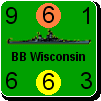warspite1
Posts: 41353
Joined: 2/2/2008
From: England
Status: offline

|
14th September 1939 (North Atlantic)
On the 8th September Donitz began recalling some of the boats that had been on patrol since late August. These included the five boats from the Hundius Flotilla that had had such a disappointing patrol up to then with just one ship sunk. Although U-38 added a second victim on her way back to Germany (the 9,500 ton British tanker Inverliffey) and U-41 was to take two Finnish vessels as prizes which improved the returns a little, one of their fellow boats from the flotilla – U-39 commanded by Kapitan Gerhard Glattes - was lost on the return home. The story begins with our old friend Fritz-Julius Lemp of Athenia fame.
U-30 (Lemp) was patrolling near Rockall, about 300 miles northwest of Ireland. Having sunk Athenia, U-30 despatched the 4,500 ton freighter Blairlogie the previous day before coming across the slightly larger Fanad Head. In order to conserve torpedoes and to obtain fresh provisions, Lemp sent over a boarding party of four that would take what they could and then set demolition charges. The freighter's crew had abandoned ship – although had sent off the standard U-boat warning signal, SSS, before taking to the two lifeboats. Lemp – a good English speaker – told the freighter’s captain that there was an American ship 300 miles away. He then brought U-30 alongside Fanad Head.
The 5,200 ton SS Fanad Head was carrying general cargo and grain from Montreal to the UK

The Royal Navy’s only modern aircraft carrier, Ark Royal, was on patrol in the same area with six (some sources state eight) destroyers for escort. The SSS signal was picked up by the carrier, and three of her escorts - the tribal class Tartar, Bedouin and Punjabi - were despatched to Fanad Head’s reported position. The carrier also launched three Skua aircraft from 803 Squadron, armed with a single 100lb bomb under the fuselage and four 20lb wing-mounted Cooper bombs, while six Swordfish from 810 Squadron were made ready on board the carrier should a target be located. We shall return to the Ark Royal in a moment. But first we follow the story to Fanad Head and U-30.
Although this aircraft had some success in the opening year of the war, like all FAA aircraft in 1939, the Skua was obsolete.

The three Skuas fanned out to search for the Fanad Head. The first Skua to reach the scene was that of Lt Thurston. He dropped his bombs but as they exploded fragments hit his aircraft’s fuel tank, setting the Skua on fire. The aircraft crashed into the sea and Thurston, though badly burned, managed to reach the Fanad Head – one of the German boarding party jumped into the sea to rescue him. PO Simpson also survived the crash but sadly did not make it to the freighter. By this time Lemp had crash dived – leaving one of the crew topside as he did so. He swam for the Fanad Head. U-30 surfaced again just as Lt Campbell’s second Skua came on the scene. He too dropped his bombs and raked the submarine before returning home short on fuel. He reported the position to Ark Royal and two more of her destroyers – Fame and Forrester – were ordered to the scene together with the Swordfish that had been placed on stand-by.
U-30 surfaced once more to recover the five crewmen aboard Fanad Head, sink the vessel and get the hell out of there. But the story was still not finished. Cue Lt Griffiths in the third Skua who, totally oblivious to what had just happened, was low on fuel and on his way back to Ark Royal when he too came across U-30. Like Griffiths, he dropped his bombs only to have them destroy his own aircraft as they exploded. PO McKay did not survive the inevitable crash into the sea, but Griffiths did and he too made it to Fanad Head.
Lemp’s crazy day was getting more bizarre. He was getting the five German crew and two British pilots into the U-boat when the first of the Swordfish located them, and in the rush to get away, U-30’s bows smashed into Fanad Head damaging the U-boat. Although U-30 survived further attacks from both the Swordfish and the destroyers that had also by now joined the fray, his boat was in a bad way and he had a number of injured men on board – one seriously. At least he had managed to sink Fanad Head before he departed the scene. Lemp set course for Iceland to drop off his badly wounded crewman and then set course for Germany. The crew of the freighter were picked up by HMS Bedouin.
Meanwhile…..
Kapitan Glattes and U-39 were on their way back to Germany when, appearing in Glattes’ periscope, was the unmistakable sight of HMS Ark Royal. She had few escorts with her and Glattes, no doubt not quite believing his luck, calmly attained a firing position and sent three torpedoes toward the carrier. Sadly for Glattes, the magnetic pistols either malfunctioned or the fish exploded prematurely. Either way, Ark Royal was not hit and now, to Glattes discomfort, he had three angry destroyer captains bearing down on him. HM destroyers Foxhound, Firedrake and Faulknor launched a concerted depth charge attack on the submarine and Glattes’ boat was badly damaged from near miss after near miss. With salt water flooding in and causing a Chlorine gas build-up, he had no choice but to bring his boat to the surface - ensuring scuttling charges were set. The crew evacuated the boat and the charges were set off, resulting in U-39 quickly sinking.
The Type IX U-39 was the first U-boat lost in World War II. She never made a kill but came close to sinking Ark Royal, the RN's only modern carrier at the start of WWII

So the RN had their first U-boat kill – and almost certainly (so they believed) two – at a cost of two Skua aircraft. The fact that Ark Royal was lucky not to be sunk did not seem to have been picked up on. The ASW patrols by the RN’s precious carriers would continue – but only for three more days……..
Source:
Ark Royal (Mike Rossiter)
The Gathering Storm (Geirr H Haarr)
Hitler’s U-boat War Vol I (Clay Blair)
 Attachment (3) Attachment (3)
< Message edited by warspite1 -- 5/17/2015 9:10:16 AM >
_____________________________
England expects that every man will do his duty. Horatio Nelson October 1805  |
 Printable Version
Printable Version
















 Let's just say the sinking of the Bismarck will be dealt with "appropriately"
Let's just say the sinking of the Bismarck will be dealt with "appropriately" 


















 New Messages
New Messages No New Messages
No New Messages Hot Topic w/ New Messages
Hot Topic w/ New Messages Hot Topic w/o New Messages
Hot Topic w/o New Messages Locked w/ New Messages
Locked w/ New Messages Locked w/o New Messages
Locked w/o New Messages Post New Thread
Post New Thread